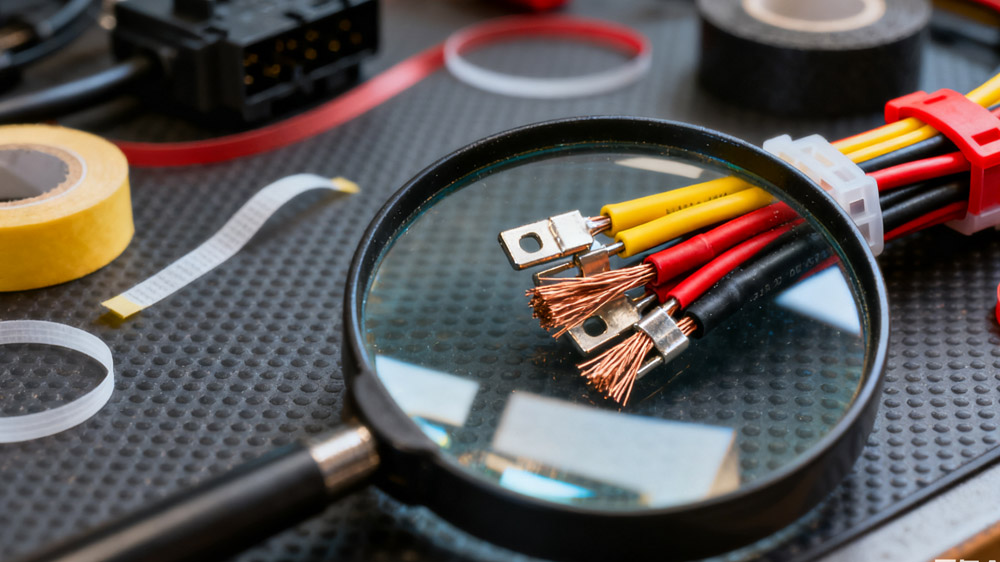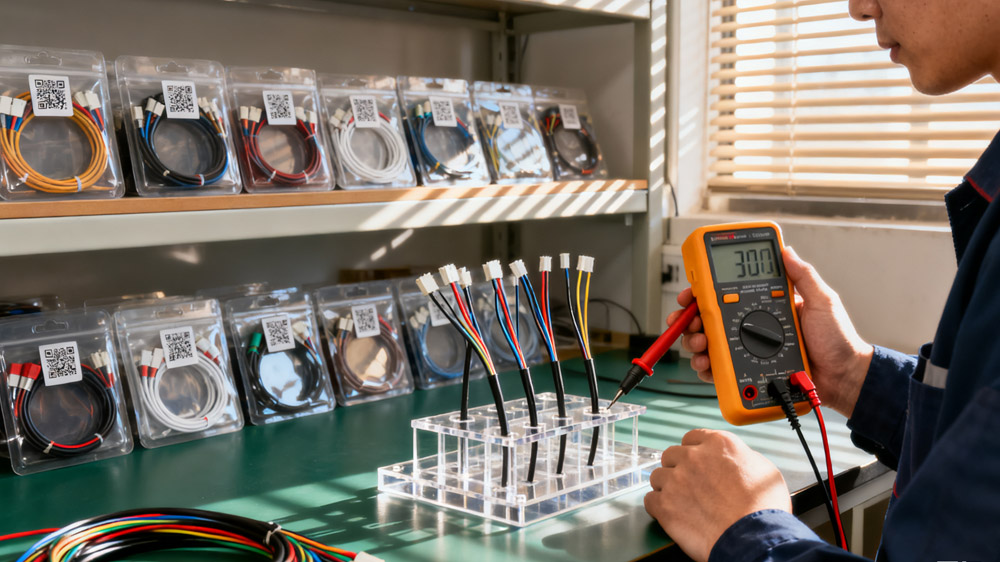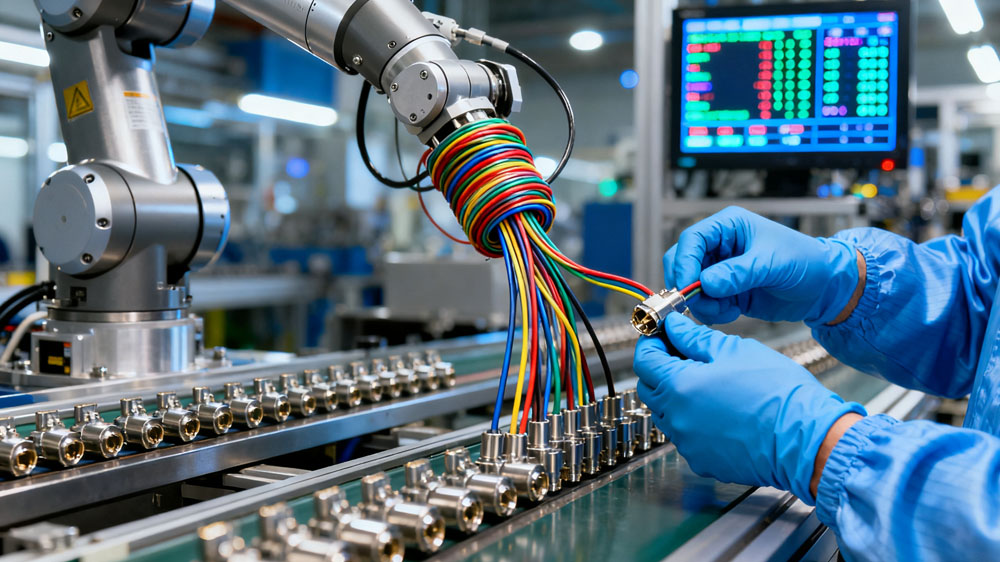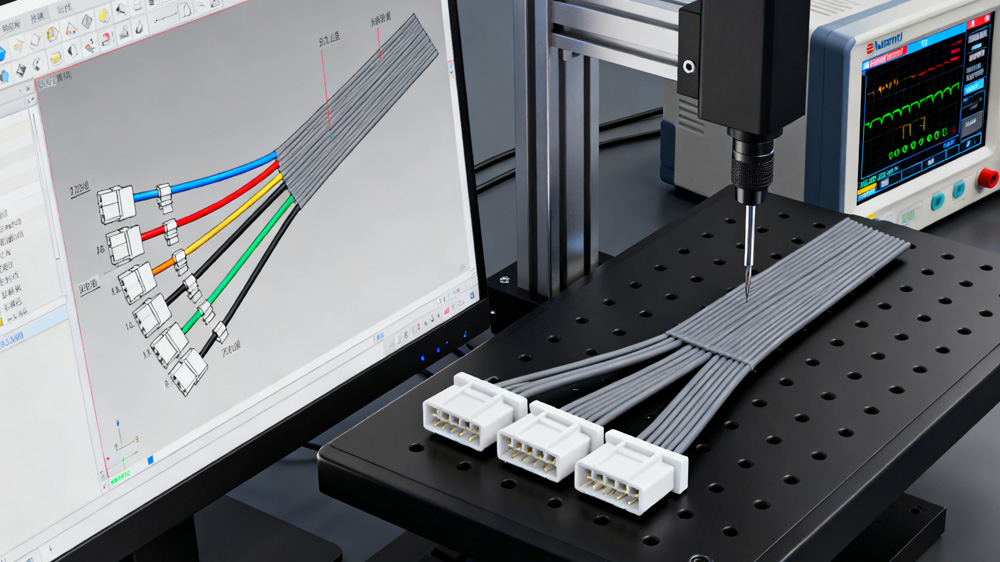In today’s fast-paced manufacturing environment, electrical wire harnesses help maintain seamless connectivity across various systems. From automotive applications to consumer electronics, wire harnesses organize and protect electrical wires, reduce installation errors, and enhance overall efficiency.
Understanding the intricacies of the wire harness manufacturing process gives manufacturers, engineers, and procurement professionals a clear perspective on how these essential components are produced.

Wiring Harness Manufacturing Process
Step 1: Design Collaboration
Manufacturing begins with requirements discussions. Designers, engineers, and clients define specifications and create diagrams or 3D models for wire routing and connector placement.
Step 2: Material Sourcing
High-quality copper wires, insulation, terminals, connectors, and protective sleeving are sourced to meet performance and durability standards.
Step 3: Wire Preparation
Wires are cut to length, stripped, and crimped to terminals or connectors, ensuring reliable electrical connections.
Step 4: Harness Assembly
Wires are assembled and spliced as needed, bundled into groups, and routed to prevent tangling and ease installation.
Step 5: Protection & Connector Assembly
Sleeving, heat-shrink tubing, and over-moulding are added for protection. Connectors are securely attached.
Step 6: Quality Testing
Testing checks continuity, insulation, and wiring configuration to ensure performance under real-world conditions.
Step 7: Labeling & Documentation
Harnesses are labeled, packaged, and shipped with diagrams and part information for easy installation and maintenance.

Why Electrical Wire Harnesses Matter
Electrical wire harnesses serve as the backbone of modern electrical systems, offering organized routing, enhanced safety, and reduced installation time.
In complex systems, such as automobiles or industrial machinery, harnesses simplify wiring layouts, minimizing the risk of errors and improving serviceability. Their role extends beyond mere connectivity, contributing to system reliability and operational efficiency.
The Step-by-Step Process of Electrical Wire Harness Design and Development
Designing a wire harness involves more than choosing wires and connectors. It requires a systematic approach to analyze electrical loads, environmental stresses, and mechanical constraints.
Engineers create detailed layouts, simulate electrical performance, and iterate designs based on testing and client feedback. By combining precise planning with material selection, the development process ensures the harness meets functional, regulatory, and durability standards.
Electrical Wire Harness Manufacturing: Essential Components and Materials
Key components in wire harnesses include conductors, insulation, connectors, terminals, and protective elements. Copper or aluminum conductors carry electrical signals, while insulation prevents short circuits and maintains signal integrity.
Connectors and terminals facilitate secure connections to devices, while sleeving, over-molding, and heat-shrink tubing provide protection and enhance durability. Selecting appropriate materials for each component directly influences harness performance and longevity.

Custom vs. Pre-Made Electrical Wire Harnesses: Which One Is Right for You?
Choosing between custom and pre-made harnesses depends on application complexity and volume requirements. Pre-made harnesses are cost-effective for standard applications, offering quick deployment and consistent quality.
Custom harnesses, however, are tailored to specific designs, accommodating unique electrical and mechanical constraints. While custom options may involve longer lead times and higher initial costs, they ensure optimal fit, performance, and adaptability.
The Future of Electrical Wire Harness Design Technology
Emerging technologies are reshaping wire harness design. Computer-aided design (CAD) and 3D modeling enable precise visualization and simulation of complex harness layouts. Digital twin technology allows virtual testing under real-world conditions, reducing errors and development time.
Additionally, advancements in materials, such as lightweight conductors and flame-retardant insulation, contribute to safer, more efficient harnesses in automotive, aerospace, and industrial applications.
The Role of Automation in Electrical Wire Harness Manufacturing
Automation is transforming harness production, enhancing efficiency and reducing human error. Robotic systems handle repetitive tasks like cutting, stripping, crimping, and assembly with high precision.
Automated testing equipment ensures consistent quality, while advanced inspection technologies detect defects before completion. By integrating automation, manufacturers can scale production, maintain consistent standards, and meet growing industry demands.

Conclusion
The wire harness manufacturing process involves design, material selection, assembly, and quality testing. Understanding each step—from design collaboration to packaging—helps manufacturers produce reliable harnesses. Advances in tools, materials, and automation continue to improve efficiency and quality in electrical wire harness production.
 +86 138-6870-3133
+86 138-6870-3133 sales@lanzmfg.com
sales@lanzmfg.com EN
EN CN
CN Search
Search